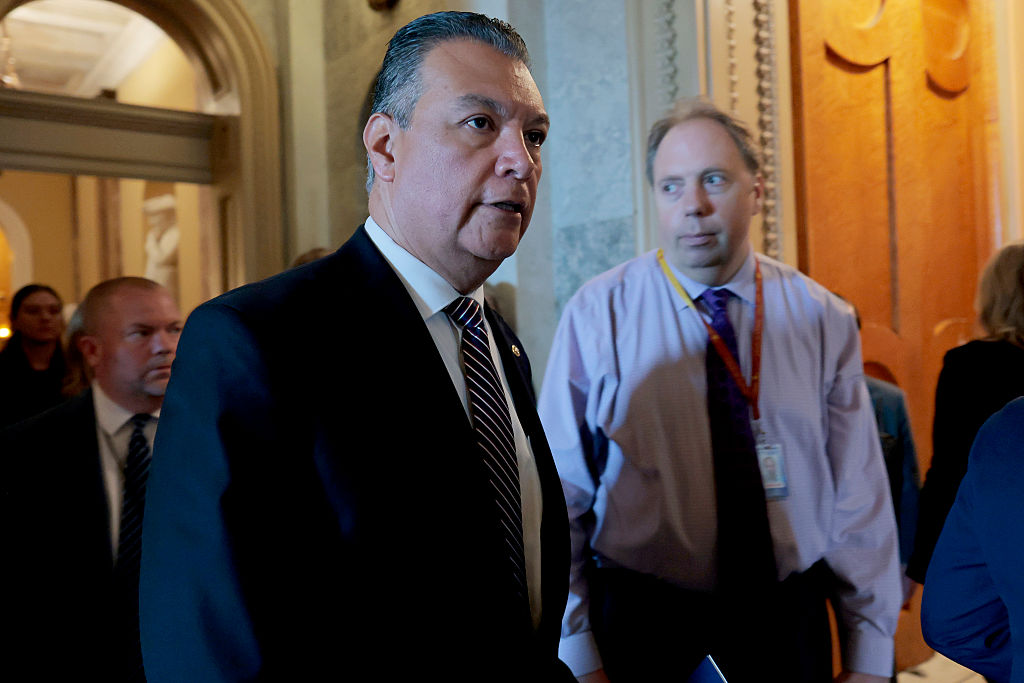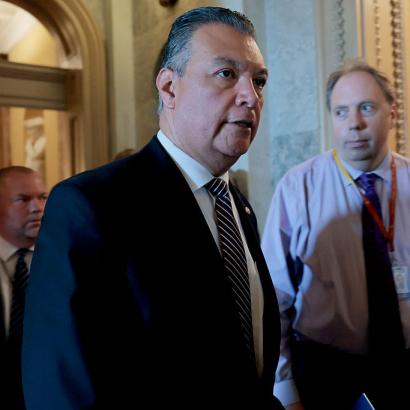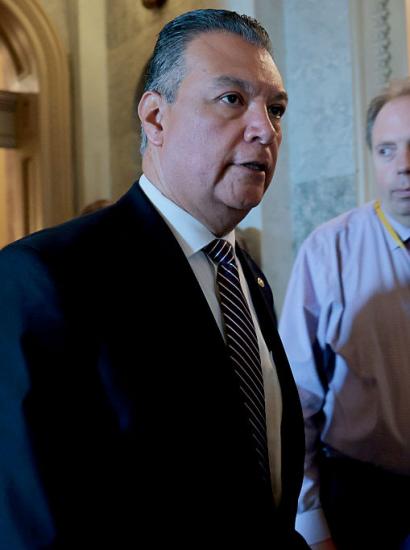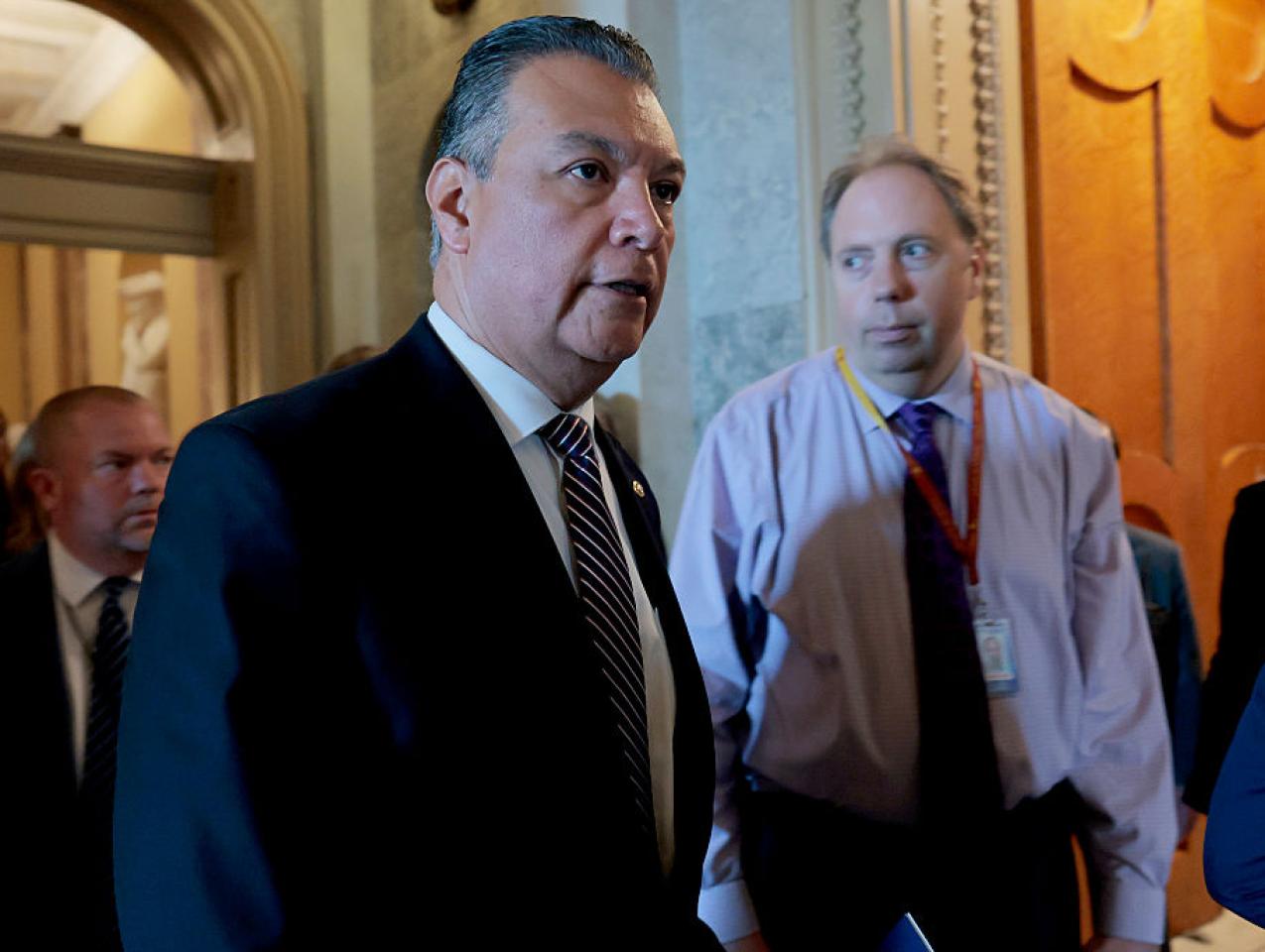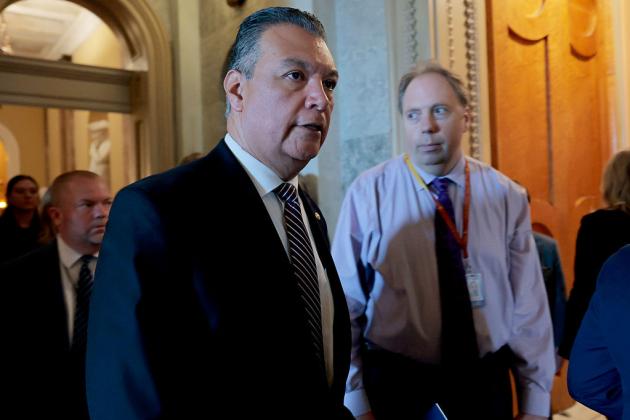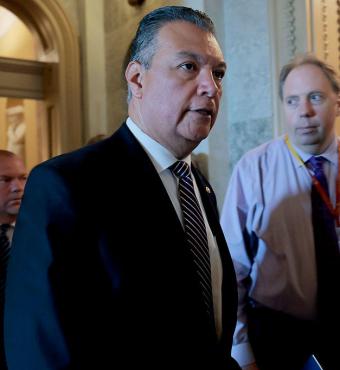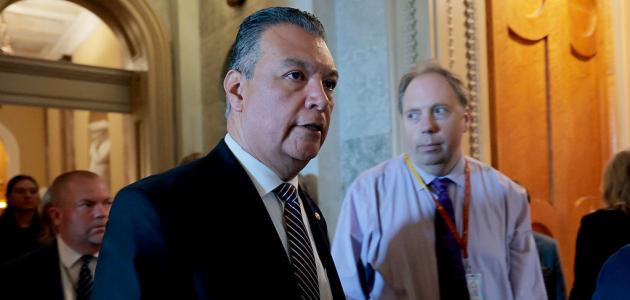- State & Local
- California
The last time I checked, governors of California serve for four years in Sacramento while US senators serve an additional two in the nation’s capital—in both cases, with longer stays in office subject to voter approval.
The beauty of this system is that it allows earnest lawmakers plenty of time to dig deeply into thorny issues, find creative ways to improve society’s welfare, and amass records of accomplishment.
Little of which seems to apply to California’s political leadership these days.
Take the case of Alex Padilla, California’s senior US senator, appointed by Governor Gavin Newsom in 2021, following Kamala Harris’s promotion to vice president, then earning a full term the following year. Padilla was very much in the news last week after being forcibly removed from a news conference held in Los Angeles by federal Homeland Security Secretary Kristi Noem.
A visit to the Padilla “newsroom” (his Senate website’s media archive), shows plenty of action since his arrival on Capitol Hill: proposing legislation, responding to events in the news, and sharing his constituents’ concerns (well, the ones who see the world in the same way as the Democratic first-term senator).
But when it comes to fruits of Senate labor—bills approved by the chamber and signed into law, credit for stirring his colleagues to action—Padilla is mostly missing in action. The same could be said of his predecessor, Kamala Harris, whose “shining moments” during her four years in the Senate centered more around nomination hearings than legislative feats.
Let’s not spend much time dwelling on the details of Padilla’s detainment at the hands of Homeland Security officials. Noem claims he “crashed” her briefing; the senator says he was allowed into the room.
Whichever is true suggests one of two things: Either Padilla is alarmingly Pollyannaish to believe that at a time when public officials are under threat of, if not on the receiving end of, actual violence, he could approach a polarizing figure like Noem claiming to be a senator (without showing proof) and not expect a swift response from her security detail.
Or, maybe Padilla knew that whatever the result of confronting Noem (getting face time or ending up face-down on the floor), it would make for a political “moment”—in this instance, Padilla being hailed as a handcuffed hero for taking on the Trump administration over immigrants’ rights.
The problem with such performative “moments”: sic transit gloria.
Just hours after Padilla’s detainment dominated the news cycle, Israel launched attacks on Iran. Then, two Minnesota lawmakers were the subject of targeted shootings (one killed, one wounded). Add the media’s obsession with all things Trump—the weekend’s “No Kings” protests across the nation coinciding with a military parade in Washington that coincided with the president’s 79th birthday—and California’s senior senator was no longer “the talk of the town” in Washington, much less the Golden State.
The question now: Does California Governor Gavin Newsom likewise discover that fame is fleeting?
In Newsom’s case, the “moment” was a televised address on ongoing tensions in Los Angeles pertaining to federal immigration raids. Those sometimes-violent protests in response to actions taken by the Immigration and Customs Enforcement agency were further complicated by the soon-to-be adjudicated legality of the Trump administration’s use of the California National Guard (and later, US Marines) to deter further civil unrest.
“Trump is pulling a military dragnet all across Los Angeles, well beyond his stated intent to just go after violent and serious criminals,” Newsom claimed. “His agents are arresting dishwashers, gardeners, day laborers and seamstresses. That’s just weakness. Weakness, masquerading as strength.”
California’s governor added: “Donald Trump’s government isn’t protecting our communities. They are traumatizing our communities. And that seems to be the entire point. California will keep fighting. We’ll keep fighting on behalf of our people, all of our people ,including in the courts.”
In terms of boosting his presidential prospects, Newsom’s nine-minute address proved to be a remarkable return on investment. CNN’s Harry Enten reported that Google searches for Newsom’s name alongside Trump’s were up 9,700% in the aftermath of the speech. It wasn’t long ago that California’s governor came under fire for hosting conservative rabble-rousers on his podcasts (raising the question of whether Newsom planned to triangulate his way to the White House, à la Bill Clinton, by occasionally agreeing with the right).
Instead, The Atlantic (a bellwether for how the liberal winds blow) deemed the run of events, including the governor’s speech and presence in Los Angeles, “the week that changed everything for Gavin Newson”. The New York Times, also a weathervane for Democratic presidential hopefuls, noted Californians’ responses to Newsom’s performance as falling between “courageous” and “self-righteous.”
Something else the speech did: It reset Newsom’s political odometer back to 2018 and his first gubernatorial campaign, when a lengthy New Yorker profile hailed him as “the next head of the California resistance.”
The question now: How many White House–dreaming angels can dance on the head of a anti-Trump pin?
Keep in mind, it was less than three months ago that New Jersey Senator Cory Booker became a “resistance” darling after a marathon Senate floor speech (1,500 minutes, to Newsom’s 9) rebuking Trump and the MAGA agenda.
Nearly a month after Booker’s bloviating, Illinois Governor JB Pritzker raged against “do nothing” Democrats in a fiery New Hampshire speech that, not unlike Newsom’s address, seemed geared to a future presidential run. (“It’s time to fight everywhere and all at once,” Pritzker bellowed. “Never before in my life have I called for mass protests, for mobilization, for disruption. But I am now. These Republicans cannot know a moment of peace.”)
And midway between Booker’s and Pritzker’s preaching: New York Represenative Alexandria Ocasio-Cortez and Vermont Senator Bernie Sanders taking their “Fighting Oligarchy” tour across America’s western states, including California (“It will never be just institutions and officials alone that uphold our democracy,” the congresswoman told a Los Angeles gathering. “It will always be the people, the masses who refuse to comply with authoritarian regimes.”)
What those three individuals and events have in common: Ocasio-Cortez, Pritzker, and Booker all may seek the presidency. But their springtime buzz didn’t make it to the summer solstice.
Could Newsom’s buzz last longer? Perhaps so, if his approach to governing California from now through January 2027 and the end of his reign is more click-bait, ad hominem speeches at Trump’s expense. (Newsom referenced the president directly or indirectly 21 times during last week’s televised address, while California received only seven mentions.)
In the meantime, Newsom has image rehabilitation to perform in his backyard. According to a Public Policy Instute of California survey released earlier this month, majorities of adults (60%) and likely voters (56%) say the Golden State is generally going in the wrong direction; three in four Californians expect bad economic times over the next year.
And their feelings toward the governor?
The same poll reports a Newsom disapproval rating of 54%, up 7 points from PPIC’s February survey. The governor’s approval rating of 44%, is down 8 points from February—an auspicious number given that Democrats hold a 20-point advantage over Republicans in voter registration.
Perhaps the blistering anti-Trump speech bolsters Newsom’s approval rating by pumping up his party’s base (in the PPIC poll, only 67% of Democrats approved of the governor’s performance; meanwhile, just 6% of California Democrats approved of Trump). But can he manage to leave office on a more positive note than his current poll numbers suggest?
Put another way: Can Newsom’s “moment” translate to momentum, locally, not nationally? And can it be done without much in the way of reform but with plenty of angry rhetoric?







